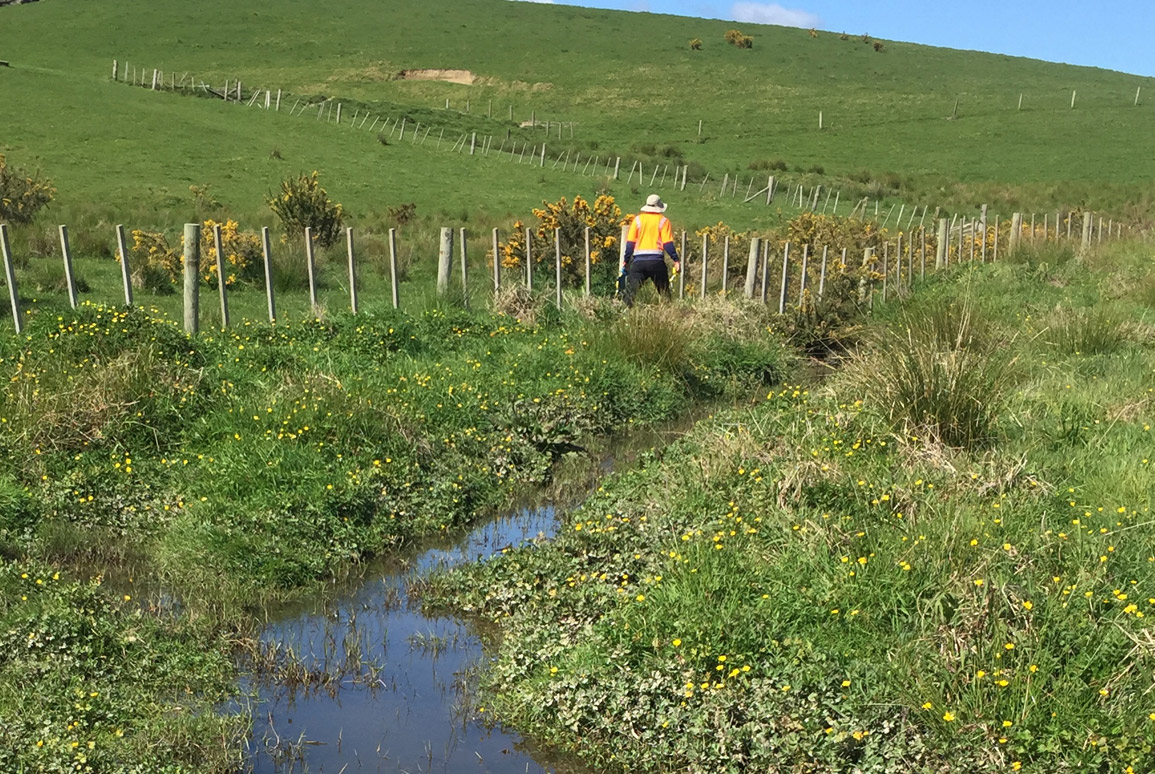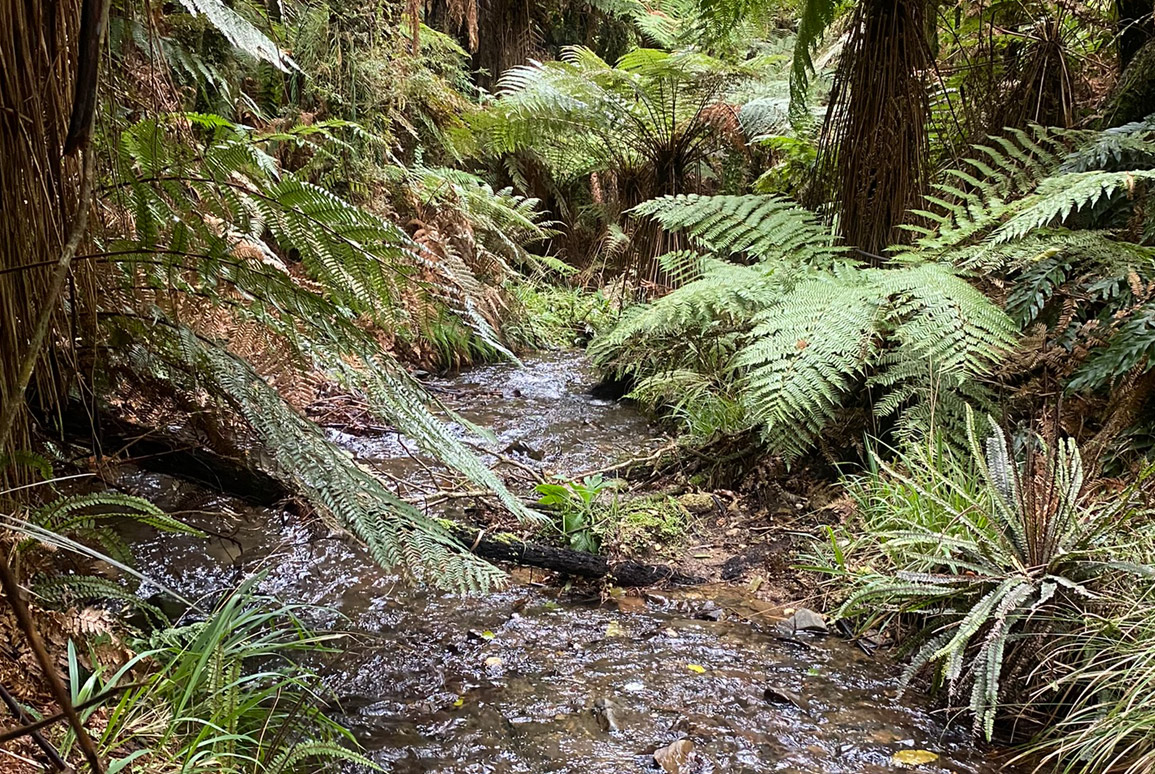Opinion: Can we save our streams?
13 June 2023
Most of our streams, lakes and rivers are in poor health and are steadily declining. Ecologist Eddie Sides is an expert in assessing the effects of human activities on freshwater environments. He asks, "Can we turn this around?"

Water everywhere
Streams are everywhere – there is a stream at the bottom of every hill! Every valley is formed by the flow of water, transforming the landscape and shaping the topography of our land. Streams and rivers provide vital resources and environmental services such as flood conveyance and water supply, ecological values such as biodiversity, and recreational and spiritual places that support our wellbeing. This resource is perpetually renewed by rainfall through the water cycle.
State of decline
The poor state of many of our streams and rivers has been extensively reported in the media, and recently documented in the Ministry for the Environment report Our Freshwater 2023. This report documents key indicators of state and trends in our freshwater environments. For example, about 45% of the length of rivers in this country are un-swimmable due to the risk of exposure to disease-causing pathogens. About 55% of rivers have moderate or severe nutrient enrichment, which results in algal proliferation and changes in ecological communities to less diverse, pollution-tolerant fauna. Many of our native fish species (76%) and freshwater bird species (68%) are now at risk.
These outcomes are due to a variety of human activities, both within streams and in their surrounding catchments. Stream habitat quality for fish has reduced due to inputs of sediment and nutrients and reduced flows. Structures such as dams and culverts impair fish migration, reducing the recruitment necessary to sustain populations. Catches of whitebait and eel have reduced over time and may not be sustainable. Water takes for irrigation reduce sustaining flows in streams, and drainage reduces water tables and shrinks wetlands.
These ecological impacts are unsustainable and are unacceptable to the public. Furthermore, climate change will exacerbate the pressures on freshwater systems in different parts of the country as some regions receive more water, and others less, and extreme events become more frequent.

Challenges in Restoration
While all streams can be improved, many studies over the past two decades have found that the results of stream restoration are often underwhelming when not part of a larger strategy based on ecological principles.
For success in stream restoration, we need to recognize limiting factors and set appropriate site-specific goals. Limiting factors are natural and anthropogenic stressors that influence and may limit ecological values, such as water quality, flow, channel modification, and connectivity to sources of fish or invertebrate recolonization.
At any restoration site, we need to identify and focus on the most important limiting factors and address them at an appropriate scale and timeframe. The number of limiting factors, and the degree to which they limit restoration, varies with the degree of stream modification and catchment land use intensity.
In native forest streams, water quality and physical habitat are unlikely to be limiting, but there may be downstream barriers that limit fish diversity. In rural streams, riparian restoration can readily improve some parameters such as temperature and limit local sediment inputs, but water quality may need to be addressed at a catchment scale. Urban streams often have multiple limiting factors, and in many cases water quality resulting from stormwater runoff and limited habitat quality will remain an impediment some ecological values.
Nevertheless, restoration of physical habitat can support freshwater invertebrate and native fish communities. However, as the opportunities to restore urban streams are limited, the best strategy may be to limit urban sprawl. Auckland Council is currently undertaking regional planning to restore blue-green networks and manage freshwater at the catchment scale through the Auckland Water Strategy 2022-2050 and Implementation Plan.

Natural resilience
While there are challenges — such as our ability to manage the effects of some activities — streams have a natural resilience, and this is a major factor that can assist with stream restoration.
Firstly, clean water is constantly renewed from rainfall. If we could magically turn off the contaminant inputs, the rivers would run clean. Because of this renewal, the potential for clean rivers never goes away.
Secondly, streambed gravels can act as self-cleaning systems, like the gravel filter in a fish tank, with microbial layers absorbing and processing nutrients and contaminants up to a certain level.
Aquatic biota (fish and insects that live in water) has a remarkable in-built capacity for recovery. This is thought to be an evolutionary adaptation to frequent natural flood disturbances in our steep and rainy country. For example, many native fish species have a diadromous life cycle, migrating between salt and fresh waters. A juvenile marine dispersal stage is followed by a spring migration upstream, where juveniles recruit to adult populations and recolonize suitable habitats. Both fish and invertebrates also have the ability to burrow into gravel streambeds to survive floods. Aquatic insects have aerial adult dispersal stages, with aquatic nymphs and aerial adult phases present at most times which provides for rapid population recovery. Aquatic species can also persist in headwaters and other refuge areas and recolonise downstream areas through downstream drift.
Because of the continual renewal of fresh water, self-cleaning systems of streambed gravels and the survival and dispersal mechanisms of stream fauna, aquatic ecosystems are highly resilient, and can bounce back. However, this is dependent on suitable in-stream conditions and source populations present and able to access to restored streams.
Can we restore stream values?
We are faced with nationwide trends of declining water quality and increasing threats to native biodiversity and the freshwater resources that support our own well-being. Healthier ecosystems will be more resilient to the stresses of climate change. We have made some progress in managing our effects. All streams can be improved, but the outcomes depend on our capacity to address limiting factors. We know what needs to be done to support stream improvement and the natural and resilient attributes of our waterways. The challenge is to act and adapt, to change how we undertake our activities to support ecological processes.
For further information please contact Eddie Sides, or others in our freshwater ecology team: Tanya Cook, Jeremy Garrett-Walker, or Dr. Tanya Blakely.

